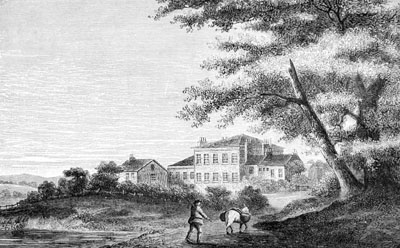Transcriber's Note:
This book contains several Unicode characters. You may need to changeyour browser's character encoding or use a different font inorder for them to display properly.
You can hover your mouse over Greek words to reveal a transliteration,and click on illustrations for a larger view.
For detailed information about the corrections and changes made, see theend of the text.
CHAPTERS
IN THE
HISTORY OF THE INSANE
IN THE BRITISH ISLES
BY
DANIEL HACK TUKE, M.D., F.R.C.P.
PRESIDENT OF THE MEDICO-PSYCHOLOGICAL ASSOCIATION,
JOINT EDITOR OF "THE JOURNAL OF MENTAL SCIENCE," AND FORMERLY
VISITING PHYSICIAN TO THE YORK RETREAT
"I might multiply these instances almost indefinitely, but I thought itwas desirable just to indicate the state of things that existed, in order to contrastthe Past with the Present."—Earl of Shaftesbury.
WITH FOUR ILLUSTRATIONS
LONDON
KEGAN PAUL, TRENCH & CO., 1, PATERNOSTER SQUARE
1882
(The rights of translation and of reproduction are reserved.)
DEDICATED TO
JONATHAN HUTCHINSON, F.R.S.,
PROFESSOR OF PATHOLOGY AND SURGERY, ROYAL COLLEGE OF SURGEONS, ENGLAND,
IN MEMORY OF
A LONG FRIENDSHIP.
PREFACE.
I think it was Pascal who said that the last thing anauthor does in making a book is to discover what to putat the beginning. This discovery is easily made in thepresent instance.
I wish to state that the range of this book, as its titleimplies, is mainly restricted to the salient points of thehistorical sketch it attempts to pourtray. To havewritten a complete History of the Insane in the BritishIsles would have necessitated the narration of detailsuninteresting to the general reader. Hence, as theperiods and the institutions of greatest importance havealone been brought into prominence, others have beeninevitably thrown into the shade. Thus BethlemHospital has occupied much space as the centre aroundwhich gathers a large amount of historic interest, havingbeen with our forefathers almost the only representativefor many centuries of the attempt to provide for theinsane in England—the outward symbol of nearly all[viii]they knew on the subject. To the Retreat at York,again, considerable attention has been devoted in thishistory, as the cradle of reform which made the year1792 the date of the new departure in the treatmentof the unhappy class, on whose behalf the various charitableand national acts recorded in this volume havebe
